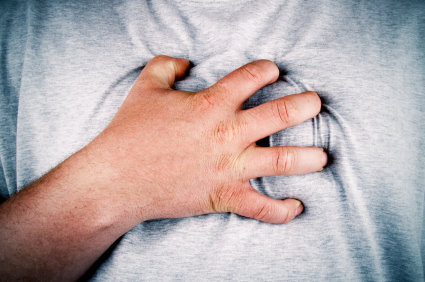
 By J. Douglas Roill
By J. Douglas Roill
Thanksgiving ushers in the winter holiday season, a six-week period of celebrations, office parties, family gatherings and humungous meals. This busy time requires planning, preparing, last-minute shopping and dealing with crowds, which leaves little time for healthy home-cooked meals and usually ends in more trips to your local fast food chain. All too often, this season of celebration leads to poor food choices and over-consumption of food and beverages. Add to this the general stress of the holidays, and you have a recipe for health-related consequences.
According to WebMD, heart-related deaths rise five percent over the holidays. It is commonly known that consuming alcohol in excess amounts to the point of intoxication can result in an array of symptoms, one or more of which are referred to as a “hangover.” In some cases, the over-consumption of food can result in similar symptoms. The unpleasant physical and mental symptoms of a “hangover” are an indicator of an assault on our bodies.
 THE “FOOD HANGOVER”
THE “FOOD HANGOVER”
An alcohol hangover normally begins within several hours after consuming alcohol, and a person’s blood alcohol concentration (BAC) begins to fall. The onset of a “food hangover” can be more immediate, following the initial “satisfaction” received from the food consumed. Food hangovers are more directly associated with the effects of overeating, rather than the results of no longer consuming food. Overeating affects blood sugar concentrations, the endocrine (hormonal) system, central nervous system, sleep patterns, biological rhythms, neurotransmitters (brain/body messaging system), the digestive tract and even hydration.

The symptoms of a food hangover are dependent upon the type and quantity of food consumed and its effect on the body. They can be recognized in varying degrees if overeating is not your typical eating pattern; however, they can be unrecognizable, especially if your body has become accustomed to the associated feelings or sensations of overeating.
SYMPTOMS INCLUDE BUT ARE NOT LIMITED TO:
- Cognitive — decreased attention and concentration.
- Constitutional — fatigue, weakness, overstuffed, muscle aches and thirst.
- Gastrointestinal — nausea, vomiting and stomach pain.
- Mental symptoms — dizziness, vertigo.
- Mood — depression, anxiety and irritability.
- Pain — headache and muscle aches.
- Sensory — sensitivity to light and sound.
- Sleep and biological rhythms — decreased sleep, decreased REM (rapid eye movements) and increased slow-wave sleep.
- Sympathetic hyperactivity — tremor, sweating, increased pulse and systolic blood pressure, and rapid heartbeat (tachycardia).
- Metabolic effects — low blood sugar, elevated blood sugar, elevated blood lipid levels, disruption of metabolism, obesity and diabetes.
MINDFUL EATING
The effects of overeating are serious. Even overeating for short periods of time can have a lasting impact on the body. Long-term effects of overeating can lead to or aggravate medical problems and diseases that are difficult to treat or that become irreversible. One strategy to deal with the potential collateral damage of holiday overeating is to become more aware of your environment.
- Be mindful of your food purchases by reading the labels and avoiding those with added or excessive sugar.
- Check your recipes. If you are feeding a family of three or four and the recipe is for six to eight people, cut the recipe in half.
- Don’t skip eating earlier in the day in anticipation of having a ravenous appetite for the “Big Meal.” Being too hungry can result in fast eating, and by the time your body registers the food being consumed, you have already overeaten.
- Be aware that joining in on conversations around you while eating can slow your consumption; however, if you are not mindful of what you are eating, you can end up overeating, especially on snack foods.
- Eat the foods you enjoy the most. A “buffet” of selections does not mean you have to eat everything.
- Use smaller serving bowls. Research indicates that the larger the serving bowl, the more you will take, and the more you take the more you will eat.
- If you consume alcoholic beverages, be mindful of the quantity consumed. Alcohol is calorie- intensive, stimulates the appetite, dulls one’s judgment, and decreases self-restraint.
- Be aware of the internal cues of how you feel during a meal. If you are no longer hungry or the food no longer tastes good, it is probably time to stop eating.
- Be aware of external cues around you. If others are still eating, this does not mean you cannot stop eating. Do not hesitate to let family and friends know that you are trying to be more aware of what you eat, and solicit their help to avoid tempting you with excessive food or drink.
- Be a gracious guest and polite eater. If you are enjoying the holidays with friends and they are known to encourage you to continue to eat, start with smaller polite portions so you can enjoy seconds. It is easier to be mindful of the number of servings you are taking than the total quantity being consumed.
This information is not intended to replace a one-on-one relationship with a qualified healthcare professional and is not intended as medical/nutritional/fitness advice. Information presented is subject to change as additional discoveries are made or additional research is published.
J. Douglas Roill, D.Mgt., RDN, is a Registered Dietitian and health coach. Douglas and his wife Bonnie Roill own Scottsdale-based B3 Nutrition. Bonnie, also a Registered Dietitian Nutritionist, health and wellness coach and a hormone support coach, helps women upgrade their digestive and hormonal health by providing programs for individuals and groups, including the “21 Day Clean Eating Detox Jumpstart” program. Visit www.b3nutrition.com
or contact Bonnie at (480) 242-9217 for more details.
For more articles and upcoming events, visit us online at GreenLivingAZ.com






